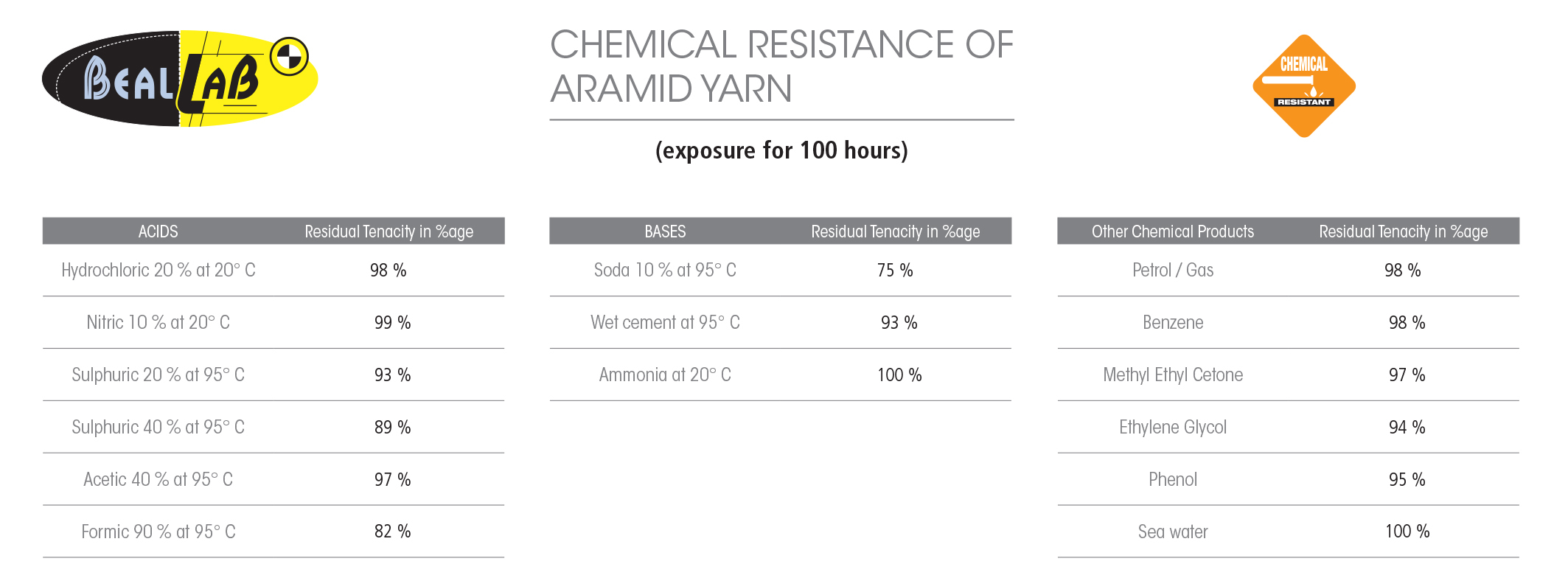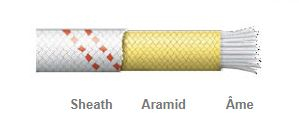Sometimes our customers are trying to source rope from HEIGHTECH that would be suitable for use in an environment that may contain hydrofluoric acid.
There are real problems with giving 'definitive' recommendations on this. It may not appear to be a particularly hard question to answer, but it is.
If the question was one of ultimate strength of a new rope, or the measured effect when exposed to a specific concentration of a chemical in lab conditions, then there is technical information from rope manufacturers that allows a limited answer to be given.
Please note that not every raw materials and product chemical reaction table uses the same concentrations when carrying out tests, or reaches the same conclusions. Tests done by materials manufacturers tend to focus on 'pure' materials, where rope manufacturers often take a more holistic approach and consider the whole product; which may contain multiple materials, dyes and thread of another material type such as polyester.
With potential chemical contamination it is a completely different game. The variables are huge and poorly controlled in the field. What can be ascertained from one series of tests may not hold true if any of the parameters are changed.
The effects of a chemical of one concentration may be different from that of even 1% change, especially if there is a 'tipping point' where the reaction takes on an exponential change. A change in temperature on site, reactions with any previous chemical reside either in the atmosphere or on the rope (e.g. rope treatments), reactions with other materials in the PPE system such as aluminium and steel alloys acting as a catalyst for production of another potentially corrosive chemical, increasing concentration by deposition in areas not easily cleaned (standing knots) and of course duration of exposure can all affect the outcome.
If a chemical reduces the products strength by 50% on contact it might appear that the factor of safety remaining is still sufficient for escape to a place of safety. However if abrasion or other mechanical wear and damage has reduced the product strength the safety margin may no longer be there.
Manufacturers recognise this, and hence the information they give regarding contamination has to be conservative and focussed on the ultimate protection of the end user.
For the end user to have any chance of deciding if a particular rope will have the chemical resistance necessary for a specific work task they will need to have the following to hand:
- Accurate information on the specific chemical to be used (manufacturers data sheets, COSHH statements, methods of mixing, concentrations, application method etc.)
- Accurate information on the environment they are to be used in (indoor, outdoor, other chemicals present if any, what concentrations of additional chemicals if any etc.)
- Temperature range on worksite
- Humidity range on worksite
- Hours of exposure expected
- Washing procedures (intended cleaner, wash temperature, rinsing media and drying procedure etc.)
Armed with this, they might be able to narrow their choices down.
Anyhow, do we have any suggestions on 'chemically resistant ropes'?
The only brand we have in-depth experience with is BEAL. They have HOTLINE, which although sold originally as a heat resisting rope is now promoted as having resistance to chemicals. The web link is: https://heightechsafety.com.au/beal-11mm-hotline-semi-static-unicore-rope-cord-200m-roll-rcstk11-dangerous-chemical-resistance-aramid-sheath.html

Please note that the chemical resistance figures are for the ARAMID inner sheath fibres, not the other elements of the rope. If you expose the rope to the chemicals listed then some of those materials will be damaged, which may significantly affect the ropes practical usability. All the ARAMID sheath is intended to do is give a time window where if contaminated the user can make an attempt to gain a position of safety.

Other rope brands do similar combined material products, some offer pure ARAMID ropes, but these can have problems of their own due to the performance of ARAMID when subject to impacts, dynamic loading and cyclic bending.
We hope that this is useful info.



